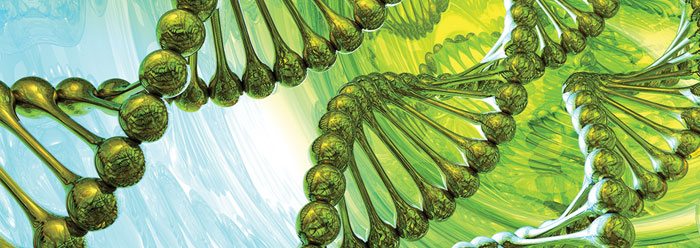 The
Resurrection of 'Junk DNA'? By Nathaniel Jeanson, Ph.D., and
Brian Thomas, M.S. *
The
Resurrection of 'Junk DNA'? By Nathaniel Jeanson, Ph.D., and
Brian Thomas, M.S. *
Evolutionists are protesting. What has them so agitated? The results of the most in-depth human genome study to date, called the "ENCODE" project, revealed that 80 percent or more of the human genome appears to have some use in the set of human body tissues they investigated.1 This contrasts starkly to the evolutionary claim that "roughly 45 percent of the human genome [is] made up of such genetic flotsam and jetsam"2 or "junk DNA."
ENCODE includes scores of researchers worldwide who sequence human DNA and measure its activity in different tissue types. The study's results effectively relegated "junk DNA" to the trash heap.3 The problem is that evolution expects to find reams of "junk DNA" in the human genome—the results of mutations over eons of evolutionary time.
Hence, a new paper appearing in Genome Biology and Evolution disputes ENCODE.4 What went wrong with ENCODE according to these study authors?
The Genome Biology and Evolution study authors further vented their grievances against the ENCODE results when they wrote, "The human genome is rife with dead copies of protein-coding and RNA-specifying genes that have been rendered inactive by mutation." When first discovered, secular researchers assumed that these gene "copies" were junk. Without even testing whether or not the copies were useful, they named them "pseudogenes," a word that means, "false-genes." "By definition, they [the pseudogenes] are nonfunctional," wrote the study authors.4 But to cite pseudogenes as evidence for evolution based on the definition of pseudogenes as relics of evolution is merely to beg the question. And experimental results continually identify important functions for pseudogenes, showing they are not evolutionary relics but design features.5
Instead of arguing in a circle, shouldn't these authors have presented another experimental dataset to refute the ENCODE results on scientific grounds?
These study authors confessed their core concern. It is the conflict between ENCODE's findings and evolution. "Countless natural experiments testing the functionality of every region of the human genome through mutation have taken place over millions of years of evolution in our ancestors and close relatives," they wrote.4 Thus, these authors attempted to refute the discovery of near-ubiquitous genetic design with assertions of evolutionary history.
"ENCODE's biggest scientific sin was not being satisfied with its role as data provider; it assumed the small-science role of interpreter of the data."4 Since when is interpreting results from lab experiments a sin? Do interpretations somehow become sins when they counter Darwinian dogma?
Clearly, these authors rejected ENCODE because it refuted the existence of "junk DNA"—a foundational concept to biological evolution. They even resisted the discovery of DNA's pervasive usefulness based on the failure of evolutionary mechanisms to produce such a clean genome.6 These detractors argued that since evolution could not have erased the junk, ENCODE researchers must have failed to find it!
If evolution could not have produced a human genome fully loaded with well-designed functional sequences, then perhaps God did. After all, He could have, and would have created a genome devoid of junk. No wonder these evolutionists are protesting ENCODE.
No experimental studies to date have comprehensively tested every position in the human genome for function in every cell type. This leaves insufficient scientific basis for claiming the human genome is filled with "junk DNA." And none of the circular arguments raised by this Genome Biology and Evolution study challenge the findings of ENCODE. On the contrary, projects like ENCODE continue to discover relevant functions for DNA features once thought to be "dead." Despite the resentment it may spark among those whose belief systems it challenges, genome science continues to clearly confirm creation.
References
- The ENCODE Project Consortium. 2012. An Integrated Encyclopedia of DNA Elements in the Human Genome. Nature. 489 (7414): 57-74.
- Collins, F.S. 2006. The Language of God. New York: Free Press, 136.
- Tomkins, J. 2012. Junk DNA Myth Continues Its Demise. Acts & Facts. 41 (11): 11-13.
- Graur, D. et al. 2013. On the immortality of television sets: "function" in the human genome according to the evolution-free gospel of ENCODE. Genome Biology and Evolution.
- Wells, J. 2011. The Myth of Junk DNA. Seattle, WA: Discovery Institute Press.
- The team wrote that "evolution can only produce a genome devoid of 'junk' if and only if the effective population size is huge and the deleterious effects of increasing genome size are considerable." The problem for evolution in their words is that "In humans [the] effective population size is pitiful."
* Dr. Jeanson is Associate Director of Life Sciences at the Institute for Creation Research. Mr. Thomas is Science Writer at the Institute for Creation Research.